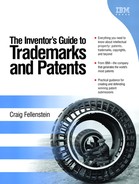The Value of a Copyright, and How to Initiate It
A copyright is the legal right granted to an author, composer, playwright, publisher, or distributor to exclusive publication, production, sale, or distribution of a literary, musical, dramatic, or artistic work.[1]
[1] As defined by http://dictionary.reference.com/search?q=copyright.
The values of establishing a copyright, aside from simply protecting the expression of an idea, are several. These values are listed here and are exactly noted (and referenced from) the United States Copyright Office. Subject[2] to Sections 107 through 122, the owner of copyright under this title has the exclusive rights to do and to authorize any of the following:
[2] For further details, please reference http://www.Copyright.gov/title17/92chap1.html.
To reproduce the Copyrighted work in copies or phonorecords
To prepare derivative works based upon the Copyrighted work
To distribute copies or phonorecords of the Copyrighted work to the public by sale or other transfer of ownership, or by rental, lease, or lending
In the case of literary, musical, dramatic, and choreographic works, pantomimes, and motion pictures and other audiovisual works, to perform the Copyrighted work publicly
In the case of literary, musical, dramatic, and choreographic works, pantomimes, and pictorial, graphic, or sculptural works, including the individual images of a motion picture or other audiovisual work, to display the Copyrighted work publicly
Also, as defined very exactly by (and referenced from) the United States Copyright Office,[3] a copyright is a form of protection provided by the laws of the United States (title 17, U.S. Code) to the authors of “original works of authorship,” including literary, dramatic, musical, artistic, and certain other intellectual works. This protection is available to both published and unpublished works. Section 106 of the 1976 Copyright Act generally gives the owner of copyright the exclusive right to do and to authorize others to do the following:
[3] For further details on this important topic, please reference the United States Copyright Office, Library of Congress, at http://lcweb.loc.gov/Copyright.
To reproduce the work in copies or phonorecords
To prepare derivative works based upon the work
To distribute copies or phonorecords of the work to the public by sale or other transfer of ownership, or by rental, lease, or lending
To perform the work publicly, in the case of literary, musical, dramatic, and choreographic works, pantomimes, and motion pictures and other audiovisual works
To display the Copyrighted work publicly, in the case of literary, musical, dramatic, and choreographic works, pantomimes, and pictorial, graphic, or sculptural works, including the individual images of a motion picture or other audiovisual work
In the case of sound recordings, to perform the work publicly by means of a digital audio transmission
In addition, certain authors of works of visual art have the rights of attribution and integrity as described in Section 106A of the 1976 Copyright Act.[4] Fees for basic registration, document recordation, supplementary registration, search services, certificates, and additional certificates are listed here. The U.S. Copyright Office increased certain fees effective July 1, 2002. For more information, read the Analysis and Proposed Copyright Fee Schedule, or see a fee comparison chart.
[4] For further details, please reference http://www.Copyright.gov/title17/106a.
For further information[5] on current fees, call the Copyright Public Information Office at (202) 707-3000, 8:30 a.m. to 5:00 p.m. Eastern time, Monday through Friday, except federal holidays. The TTY number is (202) 707-6737. See also Circular 4, Copyright Office Fees.[6] Or, you may write to this address for information:
[5] For further details, please reference http://www.Copyright.gov/title17/106a.
[6] For further details, please reference http://www.Copyright.gov/circs/circ04.html.
Copyright Office
101 Independence Avenue, S.E.
Washington, D.C. 20559-6000
For further information[7] on this specific topic, request Circular 40, “Copyright Registration for Works of the Visual Arts.”
[7] For further details, please reference http://www.Copyright.gov/circs/circ40.pdf.
It is illegal for anyone to violate any of the rights provided by the Copyright law to the owner of copyright. These rights, however, are not unlimited in scope. Sections 107 through 121 of the 1976 Copyright Act[8] establish limitations on these rights. In some cases, these limitations are specified exemptions from copyright liability. One major limitation is the doctrine[9] of “fair use,” which is given a statutory basis in Section 107 of the 1976 Copyright Act. In other instances, the limitation takes the form of a “compulsory license” under which certain limited uses of copyrighted works are permitted upon payment of specified royalties and compliance with statutory conditions. For further information about the limitations of any of these rights, consult the Copyright law or write to the Copyright Office. Fair use is an issue with digital material such as video, which is currently not resolved.
[8] For further details, please reference http://www.Copyright.gov/title17/92chap1.html.
[9] For further details, please reference http://www.Copyright.gov/title17/92chap1.html#107.
